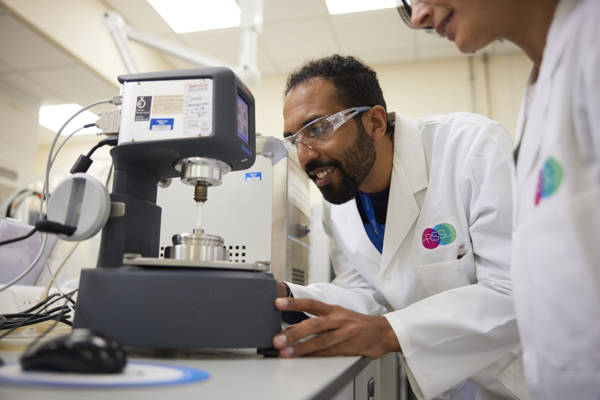


Ice cream is one of the most popular frozen desserts around the world. With consumption forecast to grow in many countries, it offers significant opportunity for product innovation. Flavours, formats and inclusion combinations are all part of the creative mix. So too is consumer demand for healthier and more environmentally sustainable alternatives to dairy ice cream. But translating new concepts into market success is challenging. Here, we explain how RSSL’s experienced team can analyse the physical properties and microstructure of ice cream in order to:




Figure 2. Spider plot showing the scores of various commercial frozen desserts.
Panellists score a variety of ice creams and other similar commercially available desserts, according to given parameters, such as sweetness, smoothness and coldness. They then discuss their observations; defining, adding and modifying descriptors in the sensory space where necessary. This allows differences between products to be visualised separately from rating which product is preferred.
Sample characterisation
We use instrumental methods to analyse the physical characteristics of a large number of samples such as smoothness, density, softness, as well as differences in melt rate and mouth coating.
Hardness measurement
This method has been developed to characterise how different products soften over time. By measuring resistance to the penetration of a 6mm cylindrical probe, we are able to observe a number of differences. For example, protein-enriched and vegan products may be harder and less likely to soften as much as dairy ice creams (see Figure 3). Further investigation of discrepancies between the sensory and instrumental data enables us to increase our understanding of consumer expectations and how other attributes, such as structure, contribute to texture quality.

Figure 3. Bar chart showing the hardness scores of various commercial frozen desserts.
The amount of air entrained in the product (known as the overrun) and the size of ice crystals directly influence texture and, as such, are particularly crucial quality parameters for ice cream. By using cryo-scanning electron microscopy (cryo-SEM), we are able to assess these structural characteristics.
For example, when we used this method (at low and high magnifications) to compare three ice cream products (see figure 4) - two dairy and one vegan - we found that:

Figure 4: Comparison of the structure of ice cream and a vegan alternative.
This analysis, together with our knowledge of ingredient functionality under the specific processing conditions required for ice cream, enables us to optimise the interaction of ingredients from a relatively small number of test runs. Plus, it can be used to inform ingredient specifications and scale-up.
Emulsion stability is critical to the quality of ice cream, which means addressing the challenges of scaling up from development kitchen to full-scale production is vital for a successful outcome. Two of the most important steps are homogenisation and churning; temperature, pressure, volume of the mix, as well as time and temperature of ageing all affect the quality of the emulsion and will be very different in industrial operations.

Figure 5: A schematic of the key steps in ice cream processing.
At the most basic level, it is impossible to form a uniform product if the fat has creamed off and other ingredients have sedimented. The rate at which an ice cream emulsion separates is determined by the particle size and density of the dispersed phase, as well as the viscosity of the continuous phase. The goal, therefore, is to optimise the level of stabilisers in the recipe and ensure that the homogenisation process reduces the particle size sufficiently.
One method that allows stability to be examined directly is the lumisizer. This test uses centrifugal force to accelerate separation while tracking the amount of material that creams-off and sediments. The resulting data can be used to:
1. Visualise the final state of the emulsion
2. Create an instability index in order to compare the effect of different formulations and optimise the processing conditions
Conducting complementary techniques, such as microscopy and rheological measurements, will also help to gain deeper understanding of the emulsion. These valuable insights save the company time and money, while also ensuring a successful and viable scale-up.
By using the right analytical tools at the right time to define and measure specific quality parameters of ice cream, RSSL is able to accelerate and improve the product development process, generating high quality products first time and ensuring a smooth transition when moving to manufacturing scale. Learnings gained at each stage help to predict where potential issues could arise and enable practical solutions to be identified sooner. In this way, we help you confidently bring your new ice cream concept to market faster.